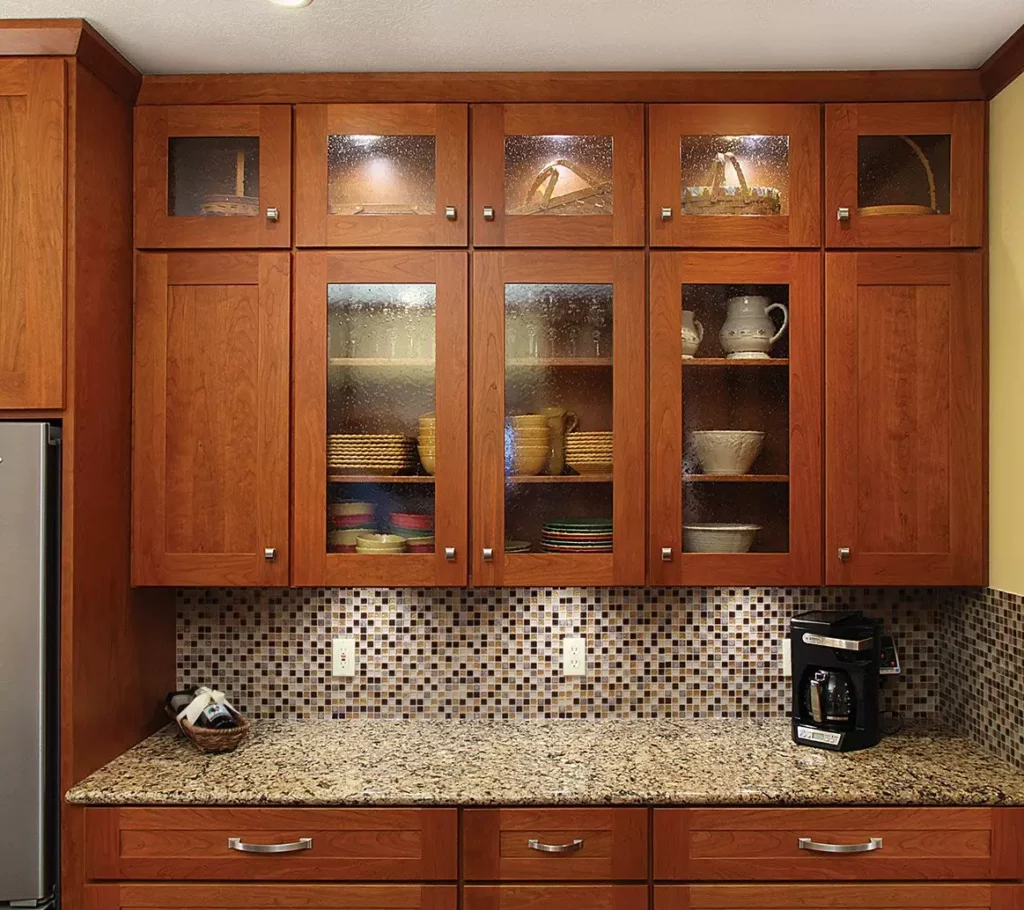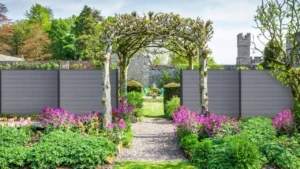A Comprehensive Guide to Installing European Kitchen Cabinets

European Kitchen Cabinet Installation
European kitchen cabinets are renowned for their sleek design, functional features, and high-quality craftsmanship. They bring a modern and elegant touch to any kitchen, often characterized by minimalistic designs and innovative storage solutions. Opting for European cabinets can transform your kitchen into a stylish and highly efficient space, making it more enjoyable to cook and entertain.
One of the main reasons homeowners choose European kitchen cabinets is their versatility and efficiency. They are designed to maximize storage while maintaining a clean and uncluttered look. Additionally, the European style often incorporates advanced features like soft-close hinges and pull-out drawers that enhance usability. This guide will walk you through the process of planning, installing, and maintaining European kitchen cabinets to help you achieve a beautiful and functional kitchen makeover.
Understanding European Kitchen Cabinets
What are European kitchen cabinets?
European kitchen cabinets are a distinctive style of cabinetry known for their modern and minimalist aesthetics. They often feature frameless construction, which allows for more storage space and a sleek, seamless appearance. This design choice eliminates the traditional cabinet frame, resulting in a streamlined look with fewer visible hardware components.
Another hallmark of European cabinets is their use of high-quality materials and finishes. They frequently incorporate durable materials like MDF (medium-density fiberboard) or plywood, which are engineered to withstand daily wear and tear. European cabinets are also known for their innovative features, such as integrated lighting and adjustable shelving, which enhance both functionality and style.
Key features and benefits
European kitchen cabinets are celebrated for their elegant, contemporary design and practical benefits. One key feature is their frameless construction, which allows for a more open and spacious feel in the kitchen. This design not only provides more storage space but also facilitates easier access to items stored inside.
Another advantage is the wide range of customization options available. European cabinets come in various finishes, colors, and materials, allowing you to tailor them to your specific taste and kitchen layout. Additionally, these cabinets often include advanced hardware features like soft-close hinges and pull-out shelves, which enhance usability and convenience.
Differences between European and traditional cabinets
European kitchen cabinets differ significantly from traditional cabinets in both design and construction. Traditional cabinets typically feature a framed design with visible hinges and decorative elements, which can create a more classic or ornate appearance. In contrast, European cabinets are frameless and emphasize a sleek, modern look with hidden hinges and clean lines.
Functionally, European cabinets are designed to maximize space and improve accessibility. They often include features such as built-in lighting and adjustable shelving, which are less common in traditional designs. Additionally, European cabinets tend to use high-quality materials and finishes that contribute to their durability and long-lasting appeal.
Planning Your Installation
Measuring your kitchen space
Accurate measurements are crucial for a successful kitchen cabinet installation. Start by measuring the dimensions of your kitchen, including the height, width, and depth of the space where the cabinets will be installed. Note any architectural features such as windows, doors, and vents that might affect cabinet placement.
Use a tape measure to take precise measurements of each wall and record them in a detailed diagram. Ensure that you also measure the distance between any fixtures or appliances, as this will help you plan the cabinet layout more effectively. Consider consulting a professional if you are unsure about taking measurements or if your kitchen has complex features.
Choosing the right style and materials
Selecting the right style and materials for your European kitchen cabinets involves considering both aesthetics and functionality. European cabinets come in various styles, from sleek and modern to more traditional interpretations. Choose a style that complements your kitchen’s overall design and reflects your personal taste.
Materials play a significant role in the durability and appearance of your cabinets. Common materials include high-quality MDF, plywood, and natural wood. Each material has its own benefits, such as durability, ease of maintenance, and visual appeal. Additionally, consider the finish of the cabinets, as options like matte, glossy, or textured surfaces can significantly impact the look and feel of your kitchen.
Creating a layout plan
A well-thought-out layout plan is essential for a functional kitchen. Start by drawing a floor plan of your kitchen and marking the locations of plumbing, electrical outlets, and ventilation. Decide on the cabinet arrangement that best suits your workflow and storage needs. Consider incorporating features like an island or breakfast bar if space allows.
Use design software or consult with a professional designer to create a detailed layout plan. This plan should include measurements, cabinet dimensions, and placement of shelves and drawers. A well-designed layout ensures that your cabinets will fit seamlessly into your kitchen and provide the functionality you need.
Preparing for Installation
Tools and materials needed
Before starting your cabinet installation, gather all the necessary tools and materials. Essential tools include a tape measure, level, drill, screwdriver, and saw. You will also need mounting brackets, screws, and adhesive if required. Ensure you have a complete list of materials based on your cabinet design and layout.
Having the right tools and materials on hand will make the installation process smoother and more efficient. Double-check that you have everything you need before beginning the installation to avoid interruptions and delays.
Preparing your kitchen space
Preparing your European Kitchen Cabinet Installation space is a crucial step in the installation process. Start by clearing the area of any existing cabinetry, appliances, and clutter. This will give you ample space to work and prevent any damage to your new cabinets.
Check the walls and floor for any imperfections or structural issues that might affect the installation. Repair any damaged areas and ensure that the surfaces are level and clean. Proper preparation will help ensure that your cabinets are installed correctly and securely.
Hiring a professional vs. DIY
Deciding whether to hire a professional or tackle the installation yourself depends on your skills and experience. Professional installers bring expertise and efficiency to the job, ensuring that the cabinets are installed correctly and with minimal disruption. They can also handle any unforeseen issues that may arise during the installation.
If you choose to do it yourself, ensure that you have the necessary tools and experience to complete the installation. DIY installation can be cost-effective, but it requires careful planning and attention to detail. Consider your comfort level with complex tasks and whether you have the time and resources to devote to the project.
Step-by-Step Installation Process
Removing old cabinets (if applicable)
If you are replacing existing cabinets, start by carefully removing them. Begin by disconnecting any plumbing or electrical connections associated with the cabinets. Use a screwdriver to remove the cabinet doors and shelves, and then unscrew the cabinets from the wall.
Be cautious when removing old cabinets to avoid damaging the walls or surrounding areas. Dispose of the old cabinets properly, and prepare the space for the new European cabinets.
Assembling European cabinets
European cabinets often come pre-assembled or require minimal assembly. Follow the manufacturer’s instructions for assembling the cabinets, which typically involves connecting panels and installing hardware. Ensure that all components are securely fastened and aligned according to the design specifications.
If your cabinets require assembly, work on a clean, flat surface to avoid damaging the materials. Check that all parts are included and in good condition before beginning the assembly process.
Installing base and wall cabinets
Start by installing the base cabinets, as these will form the foundation for your wall cabinets. Use a level to ensure that the base cabinets are aligned properly and secure them to the wall using mounting brackets and screws. Make sure the cabinets are level and adjust as needed.
Once the base cabinets are installed, move on to the wall cabinets. Hang the wall cabinets on the mounted brackets and secure them to the wall. Check the alignment and make any necessary adjustments to ensure a seamless fit. Ensure that all cabinets are securely fastened and properly aligned with each other.
Adjusting cabinet doors and hardware
After installing the cabinets, adjust the doors and hardware to ensure proper functionality and appearance. European cabinets often feature adjustable hinges and soft-close mechanisms. Fine-tune the hinges to achieve even gaps and ensure that the doors close smoothly.
Check the alignment of all drawers and shelves, making adjustments as needed to ensure that they operate correctly. Properly adjusted doors and hardware enhance the overall look and functionality of your new cabinets.
Finishing Touches
Adding countertops and backsplashes
With the cabinets installed, it’s time to add countertops and backsplashes. Choose materials that complement your European cabinets and fit your kitchen’s design. Countertops come in a variety of options, including granite, quartz, and laminate, each offering different benefits and aesthetics.
Install the countertops according to the manufacturer’s instructions, ensuring a snug fit and proper sealing. Add a backsplash to protect the walls and enhance the kitchen’s visual appeal. Backsplashes come in various materials such as tile, glass, or stainless steel, providing both functionality and style.
Painting and finishing
If your cabinets require painting or finishing, do so after the installation is complete. Choose a high-quality paint or finish that complements the style of your cabinets. Apply multiple coats if necessary and allow adequate drying time between applications.
Consider using a professional painter if you want a flawless finish. Proper painting and finishing enhance the durability and appearance of your cabinets, ensuring they look great for years to come.
Organizing and arranging kitchen items
Once the cabinets are installed and finished, organize and arrange your kitchen items for optimal functionality. Utilize shelves, drawers, and pull-out racks to maximize storage space and keep items easily accessible. Arrange items based on frequency of use and convenience.
Consider adding organizational tools like dividers and baskets to keep everything in place. A well-organized kitchen enhances usability and makes cooking and cleaning more efficient.
Maintenance and Care
Cleaning tips for European cabinets
Maintaining the appearance of your European kitchen cabinets involves regular cleaning. Use a soft, damp cloth to wipe down surfaces and remove dust and spills. Avoid using harsh chemicals or abrasive cleaners that can damage the cabinet finishes.
For stubborn stains, use a mild soap solution and a soft sponge. Rinse the area with clean water and dry it thoroughly to prevent water damage. Regular cleaning helps keep your cabinets looking fresh and extends their lifespan.
Handling common issues and repairs
European cabinets are designed to be durable, but occasional issues may arise. Common problems include loose hinges, sticky drawers, or minor scratches. Address these issues promptly to maintain the functionality and appearance of your cabinets.
For loose hinges, adjust them according to the manufacturer’s instructions. If drawers are sticking, check for obstructions and ensure that the tracks are properly aligned. For scratches or damage, consider using touch-up paint or seeking professional repair services if needed.
Conclusion
European kitchen cabinets offer a modern and functional upgrade to any kitchen. By understanding their features, planning your installation, and following the correct installation procedures, you can create a stylish and efficient kitchen space.
Whether you choose to hire a professional or take on the project yourself, attention to detail and proper maintenance will ensure that your cabinets look and perform their best. Enjoy the transformation and functionality of your new European kitchen cabinets, and make the most of your enhanced kitchen space.







